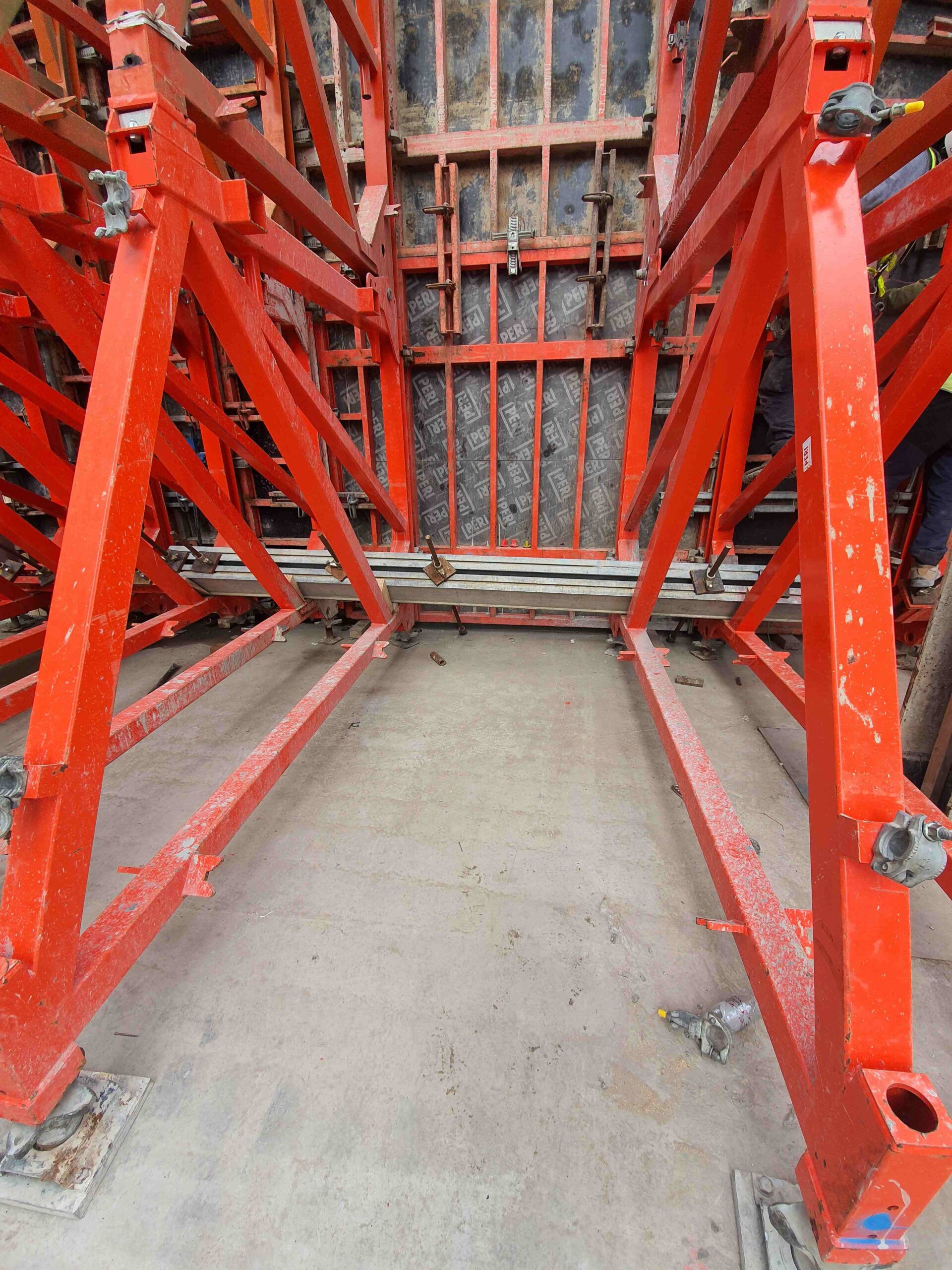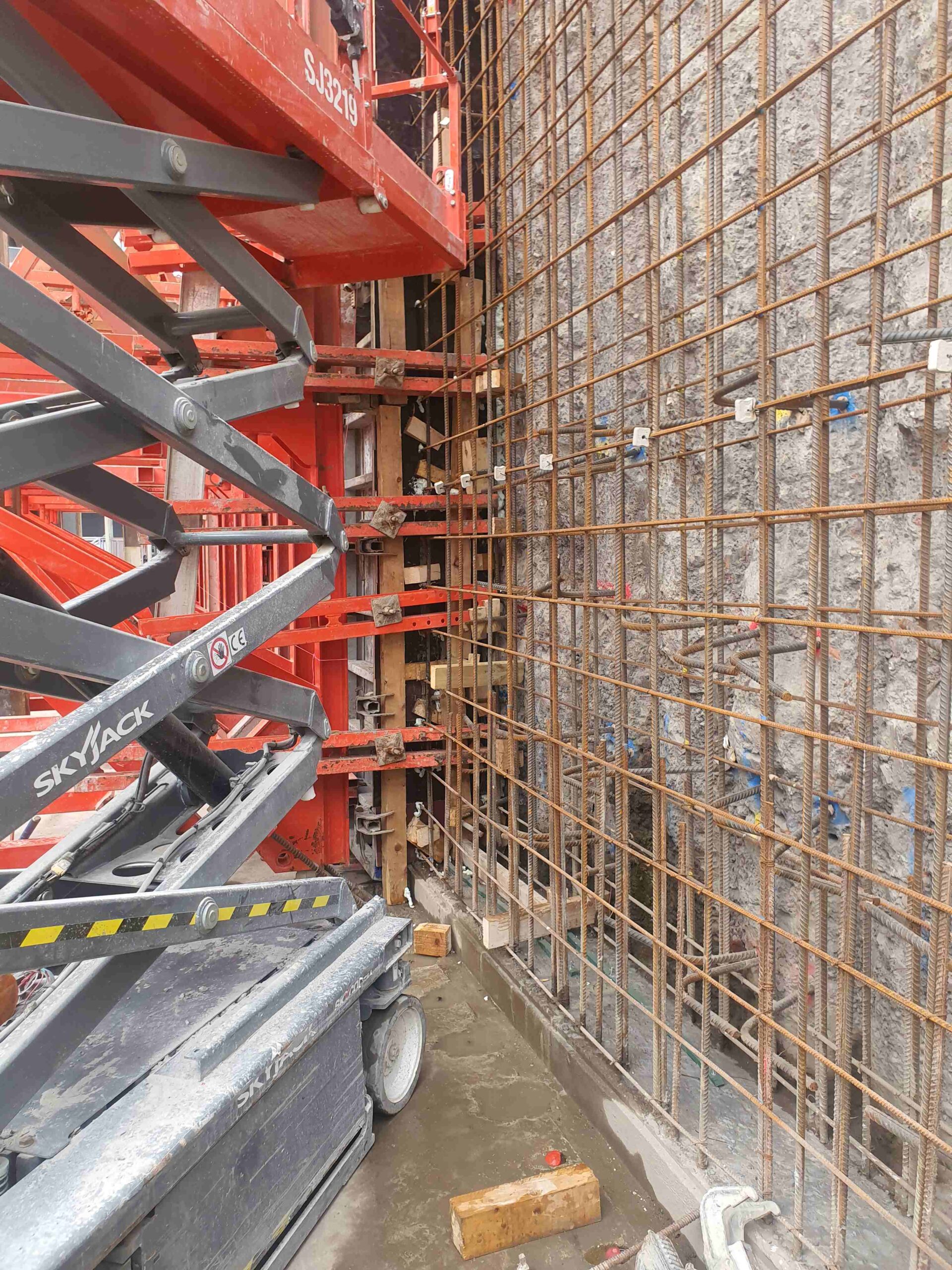One-sided shutters are among the most common points of formwork failure in concrete construction, especially for retaining walls, columns, and other vertical elements. Unlike standard two-sided formwork systems, which are tied together with form ties or wall connectors, one-sided shutters rely heavily on external anchors and bracing to resist the substantial pressure of fresh concrete. This makes them particularly vulnerable to bursting or blowouts. Based on my site experience, these failures are often due to a combination of design flaws, installation mistakes, and rushed construction practices.
Why One-Sided Shutters Are Prone to Failure
- Incorrectly Positioned or Poorly Installed Anchors:
– Anchors are often cast into slabs at the wrong angle, position, or embedment depth, making them unusable or difficult to connect securely.
– If the concrete around the anchor is poorly compacted or has air voids, the anchor may not hold the required load.
– Misaligned or missing anchors force carpenters to adjust the strongbacks, often requiring different length supports to bridge over gaps, which can lead to unstable formwork.2. Incomplete or Uneven Anchor Connections:
– When anchors are installed at the wrong angle, connecting them to the formwork applies uneven forces, increasing the risk of failure.
– If tie rods or connector parts are not properly tightened, they can slip or burst under pressure.
– Using mixed lengths of strongbacks to compensate for poor anchor placement introduces weak points.
– **Marking Insertion Depth:** Connectors between the anchor and tie rods should be clearly marked to indicate the correct insertion depth. This ensures the full threaded length is engaged, reducing the risk of slipping or pullout under load.
Improvised strogbacks made out of T225 aluminium beams due to missing anchor and tie rod 3. Rapid Pour Rates and Excessive Pressure:
– Pouring concrete too quickly increases the hydrostatic pressure against the formwork.
– Without properly staged pouring, the formwork can fail before the concrete has time to set and gain strength.
– This is a particular problem for one-sided shutters, which cannot balance pressure from both sides.4. Improperly Constructed or Installed Side Stop Ends:
– Many failures are caused by poorly constructed side stop ends, which should be installed as per the temporary works design.
– Using wedges between plywood stop ends and rebar creates weak points that can slip or dislodge under pressure.
– Reusing plywood strips to fit rebar centers can weaken the joint over time, increasing the risk of failure.
Side stop end installed incorrectly with timber wedges 5. Poor Quality Control and Rushing the Pour:
– Rushing to complete a pour often means using poorly installed anchors or ignoring the proper anchor layout.
– Anchors that are not properly aligned or cast to the correct depth can significantly weaken the formwork.
– When time pressure is high, there is a tendency to skip critical safety checks, increasing the likelihood of a blowout.6. Uneven or Insufficient Bracing and Strongback Connections:
– If the connectors between anchors and strongbacks are not tied equally and fully, the load is unevenly distributed.
– This can cause the rod to slip out or the connector to burst, especially under high pressure.
– In some cases, entire sections of formwork can fail if one connection fails and the load shifts suddenly.
Practical Recommendations for Preventing One-Sided Shutter Failures
– **Anchor Positioning:** Double-check anchor positions, angles, and embedment depths before concrete placement.
– **Strongback Installation:** Use strongbacks of consistent length where possible to avoid stress concentrations.
– **Rate of Pour Control:** Follow temporary works guidelines for pour rates to avoid sudden pressure spikes.
– **Stop End Design:** Use properly designed and installed stop ends, avoiding excessive use of wedges and temporary shims.
– **Mark Connector Depths:** Clearly mark the insertion depth on connectors to ensure proper engagement and reduce the risk of pullout.
– **Regular Inspections:** Inspect all connections before and during pouring to catch potential failures early.
– **Training and Communication:** Ensure all site operatives understand the critical importance of correctly installing and securing one-sided shutters.
Conclusion
One-sided shutter formwork failures are a common but avoidable problem in concrete construction. With proper planning, careful installation, and strict adherence to temporary works designs, these failures can be significantly reduced, improving both safety and construction quality.

